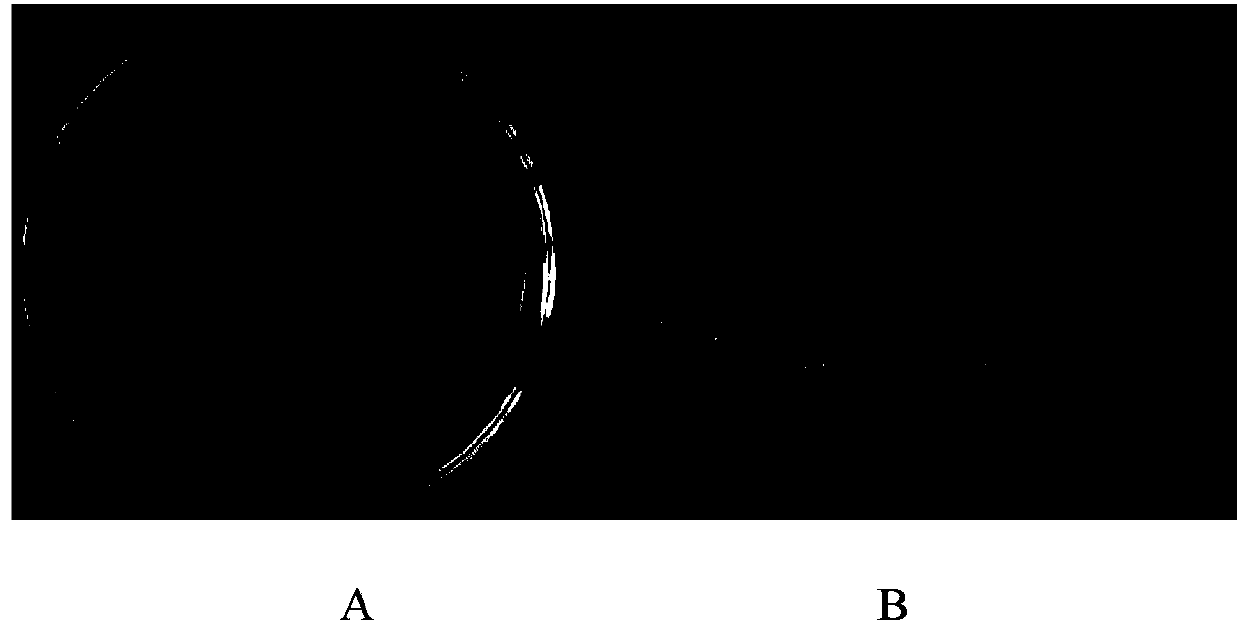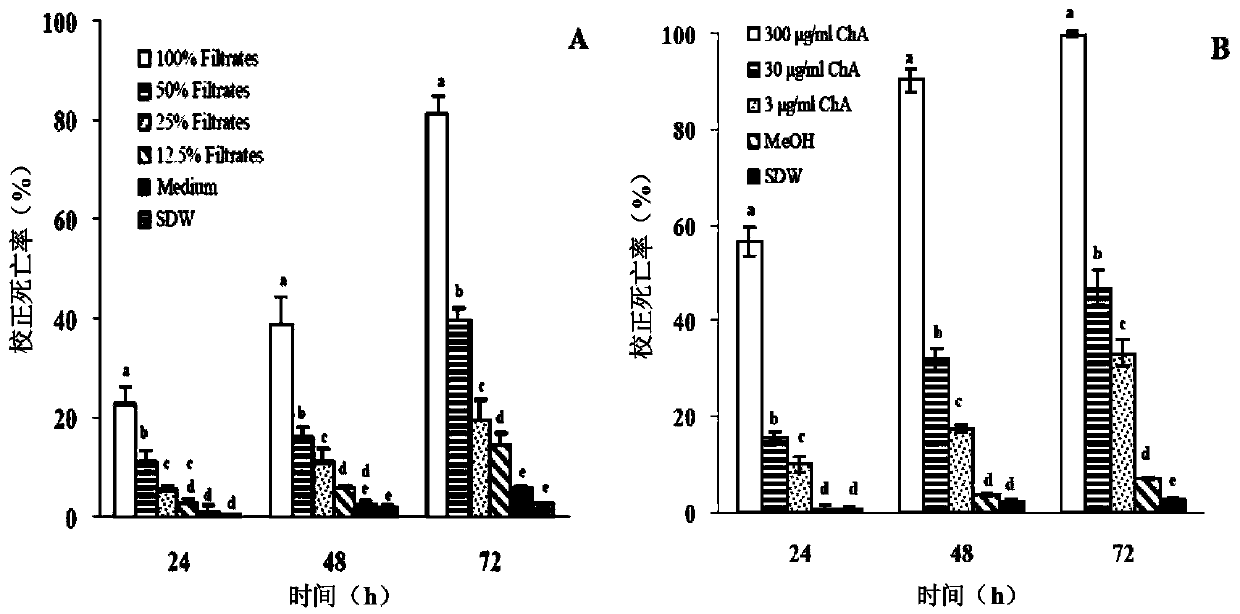Chaetomium globosum with nematicidal activity, metabolite and application thereof
A technology for chaetomium globosa and nematodes, applied in the direction of biocides, nematocides, biochemical equipment and methods, etc., to achieve low production costs, simple production process, and growth-promoting effects
- Summary
- Abstract
- Description
- Claims
- Application Information
AI Technical Summary
Problems solved by technology
Method used
Image
Examples
Embodiment 1
[0021] Example 1. The culture characteristics of C. globosum NK106 of the present invention
[0022] The C. globosum NK106 strain of the present invention is isolated from the bark of pine (Cupressns sp.) in a certain place in the northeast. After the strain was cultured on the PDA plate at 28°C for 2 weeks, the bacterial body appeared brown (such as figure 1 A), collect the spores with sterile water to obtain a spore suspension. The spore suspension was transferred to a 500ml flask containing 200ml PDA potato medium, and cultured at 28°C and 180rpm shaking for 9 days (such as figure 1 Shown in B). Inoculate 1×10 per flask 5 Spores. PDA medium formula (g / L): 200g potato, 20g sucrose, 20g agar (added to solid medium).
Embodiment 2
[0023] Example 2. C. globosum NK106 fermentation product processing process provided by the present invention, product analysis and identification
[0024] The fermentation broth cultured in PDA in Example 1 was suction filtered to separate the hyphae from the fermentation broth; the fermentation supernatant obtained after suction filtration was mixed with an equal volume of dichloromethane and extracted overnight; a rotary evaporator was used After concentrating the organic phase filtrate obtained in the previous step, the crude product is obtained, which is analyzed, identified and collected by high performance liquid chromatography (HPLC).
[0025] HPLC selects analytical C-18ODS chromatographic column (4.6×250mm, Kromasil), chromatographic conditions: detection wavelength 227nm, flow rate 1mL / min, column temperature is room temperature, mobile phase is methanol:water=7:3. Experiments show that the fermentation product contains the same retention time as the ChA standard substan...
Embodiment 3
[0026] Example 3 Nematicidal activity of NK106 strain fermentation broth and purified ChA
[0027] The fermentation broth experiment has 5 treatments: 100%, 50%, 25%, 12.5% fungal filtrate (Filtrates) and PDA medium (Medium, control). The ChA experiment has 3μg / mL, 30μg / mL, 300μg / mL and 4 treatments with 10% methanol (MeOH, control). Both treatments have sterile distilled water (SDW) as a blank control. Each treatment includes 6 repetitions. The following experimental methods (2) and (3) both use these two sets of treatments for experiments.
[0028] 1. Experimental method
[0029] (1) Preparation of nematodes and eggs
[0030] The eggs used in the experiment were obtained from the roots of Capsicum annuum L. infected by Meloidogyne incognita. After washing the soil on the roots, place it in 1% sodium hypochlorite and stir with a stirrer to release the eggs in the egg mass, and then pass the 200 mesh and 500 mesh sieve, and collect the eggs on the 500 mesh sieve. The second ins...
PUM
 Login to View More
Login to View More Abstract
Description
Claims
Application Information
 Login to View More
Login to View More - Generate Ideas
- Intellectual Property
- Life Sciences
- Materials
- Tech Scout
- Unparalleled Data Quality
- Higher Quality Content
- 60% Fewer Hallucinations
Browse by: Latest US Patents, China's latest patents, Technical Efficacy Thesaurus, Application Domain, Technology Topic, Popular Technical Reports.
© 2025 PatSnap. All rights reserved.Legal|Privacy policy|Modern Slavery Act Transparency Statement|Sitemap|About US| Contact US: help@patsnap.com



